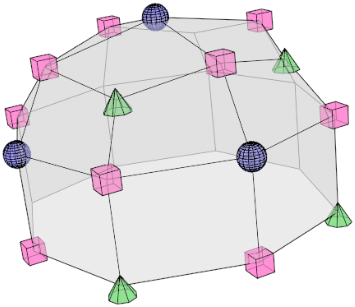This algorithm is also on Wikipedia, but I wanted to write a slightly modified version of it, because I think a couple of steps can be made a bit clearer than on Wikipedia, at least at the time of writing this.
Images by Wikipedia user UserTwoSix.
Step 1: For every face:
- Calculate the average of all its vertices
==> These are called the face points (blue spheres)
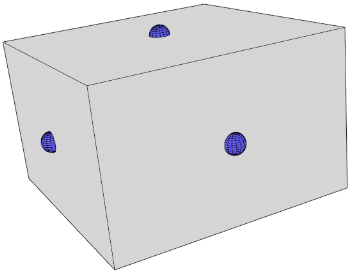
Step 2: For every edge:
- Take the average of the two vertices that the edge connects and the two face points that belong to the faces that the edge is in middle of
==> These are called the edge points (purple cubes)
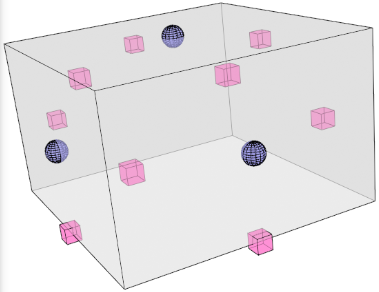
- Additionally, take the average of the two vertices that the edge connects and call it the edge midpoint (not in the picture)
Step 3: For every vertex:
-
Calculate F = the average of all the face points (blue spheres) of the faces that contain this vertex
-
Calculate R = the average of all the edge midpoints (not in the picture) of the edges that contain this vertex
-
P = the original position of the vertex
-
Calculate n = the number of edges that contain this vertex
-
Calculate:
(F + 2R + (n - 3)P) / n
==> These are called vertex points (green cones)
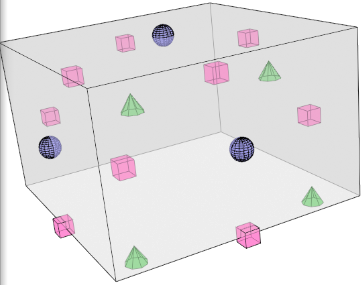
==> The new vertex positions have now been calculated. Now we just need to create the new faces.
Step 4: For every original face:
- Make new edges by connecting each face point (blue) to every edge point (purple) which belongs to an edge that the face in question contains.
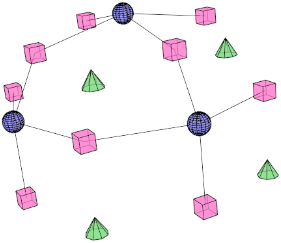
Step 5: For every original vertex:
- Connect each new vertex point (green) with a new edge to those edge points (purple) that belong to those edges that the vertex touches

Step 6: For every new 4-vertex loop:
- New loops with four edges have formed
- Make a new face for every such loop
